|
We cannot overemphasize the importance of prevention. A few simple changes in your office setup and work habits could save you months or years of pain and disability. Once you have an RSI, the healing process is usually long and frustrating. Don't make the same mistakes we did. Take the advice below seriously.
Type Properly
Proper typing is one of the best ways to prevent RSI. (See also the section on Alternative Keyboards in the tips section). One of the most common mistakes people make is to contort their hands to perform key combinations, such as a shifted letter. Control and alt present the same problem. Typing key combinations by contorting one hand often leads to numbness, tingling, or loss of feeling in the pinky: cubital tunnel syndrome or ulnar neuropathy. Instead, you should use one hand to hit the letter key, and the index finger of the opposite hand to hit the control, shift alt or meta key.
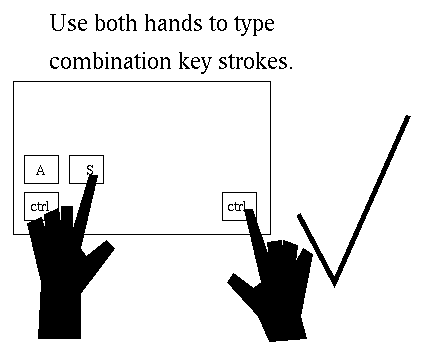
Twisting your hands puts strain on them. Resting on a wrist rest, the table, or arm rests while typing forces you to twist your hand to reach some keys. Instead, it is better to keep your hands moving freely above the keyboard, letting the strong muscles of your arms move your hands.
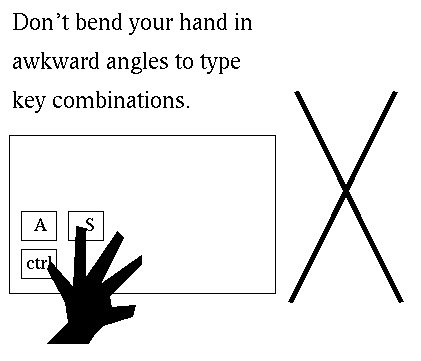
It is also a bad idea to contort your hands in other ways. For instance, some people lift their pinky or thumb while typing. Your hand should be flat, and parallel to the keyboard, without twisting. There should not be any pressure on your wrists or forearms while you type. You should NOT rest your wrists on a wrist rest except while taking a very short break from typing. A wrist rest of the proper height (level with the space bar) can also serve as a reminder to keep your wrists straight. If you feel your wrist touching the rest, you know that your wrists are starting to dip.
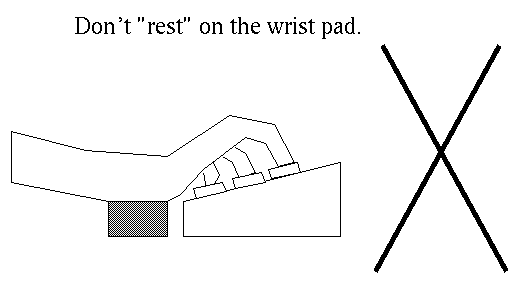
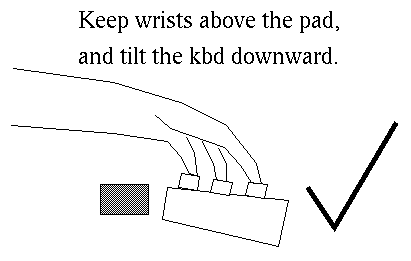
Take frequent breaks
Many short breaks are better than a few long ones. Taking a break can be as simple as taking your hands off the keyboard and letting your arms droop at your sides. Every half hour, get up from your desk and stretch to loosen your neck and shoulder muscles. Try to take 10 minutes of breaks every hour, more if you need it. "Repetitive Strain Injuries, a Computer User's Guide", by Dr. Emil Pascarelli and Deborah Quilter, recommend the following rule of thumb, for those experiencing problems: see how long you can type without feeling any symptoms (pain, tingling, numbness, even just hightened awareness). Then subtract 10 minutes from this time. Don't type any longer than this without taking a break. By the way, if you can only type 10 minutes or less without symptoms, or worse, have symptoms constantly, then you shouldn't be typing (or writing, or anything else which causes problems) at all.
Stretch
Just as in athletics, stretching is essential for preventing injury. You should stretch your wrists before you start typing, and when you take breaks throughout the day. One sample stretch is illustrated below. Note: If you already have symptoms of RSI, improper stretching can be harmful. You should see a doctor before doing stretches.
The prayer stretch is a good stretch for several kinds of RSI, but it is particularly helpful if you are trying to avoid getting RSI. If you already have the symptoms of RSI, our advice is to get the advice of a physical therapist regarding what sorts of exercises you should do. In fact, some people think that the prayer stretch can actually be harmful if you already have certain kinds of RSI.
The prayer stretch has many positions. The main position is as if you were praying, hands together. Gently push to one side, hold for 15-30 seconds, and then gently to the other side for 15-30 seconds. As with all stretches, if you go too hard or too long, this could cause soreness or burning sensations -- go only until you feel a gentle stretch. Keep fingers straight, and fingertips together.
There are several other positions, including hands rotated 180 degrees, pointing downward, or rotated 90 degrees, pointed inward. A final variation is hands pointed downwards, with backs together instead of palms.
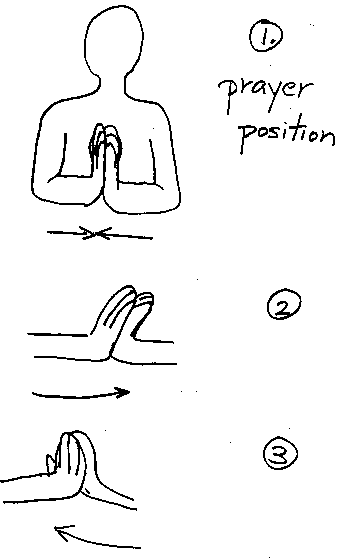
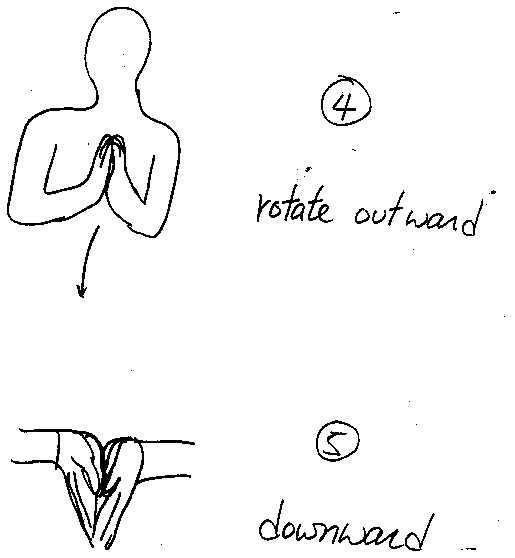
Practice good ergonomics
When you type, your wrists should be straight (not twisted in or out) and flat (not bent down or up). The way you hold your arms, shoulders, and neck can also contribute to problems. You should sit with your thighs level, or angled slightly downward, and your feet flat on the floor (or a foot rest). You should sit up straight with your shoulders relaxed, your upper arms at your side, and your forearms horizontal or tilted slightly downward. A rough rule of thumb is that your knees and elbows should form right angles. Your keyboard should be level or have a slight negative tilt (top row lower than the bottom row). The top of your screen should be at about eye level. Adjust the position of your keyboard and monitor to accommodate your body, not vice versa.
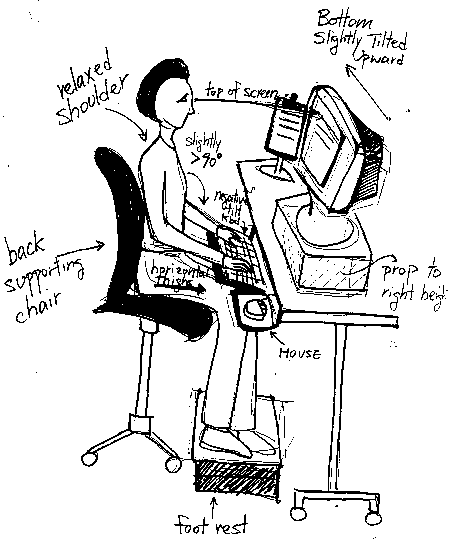
|





